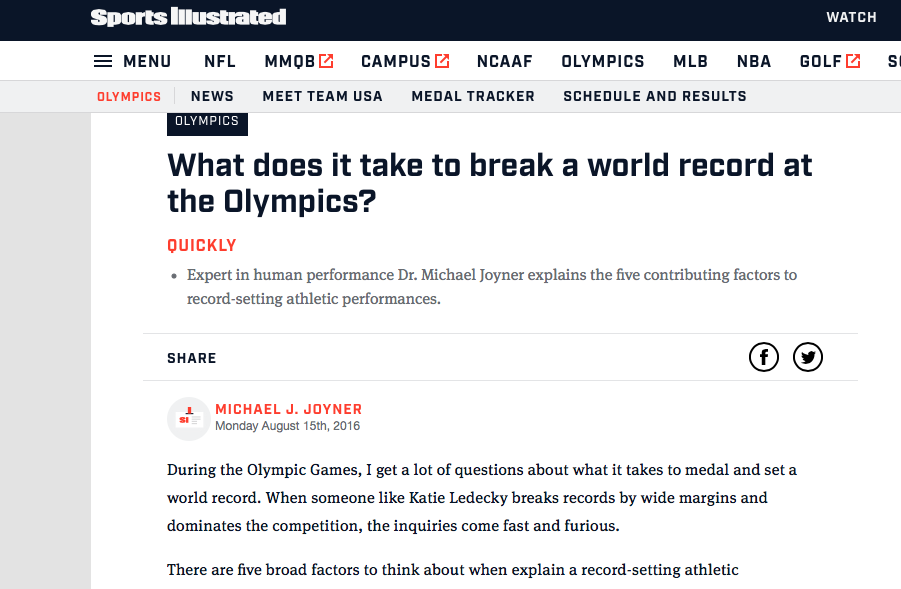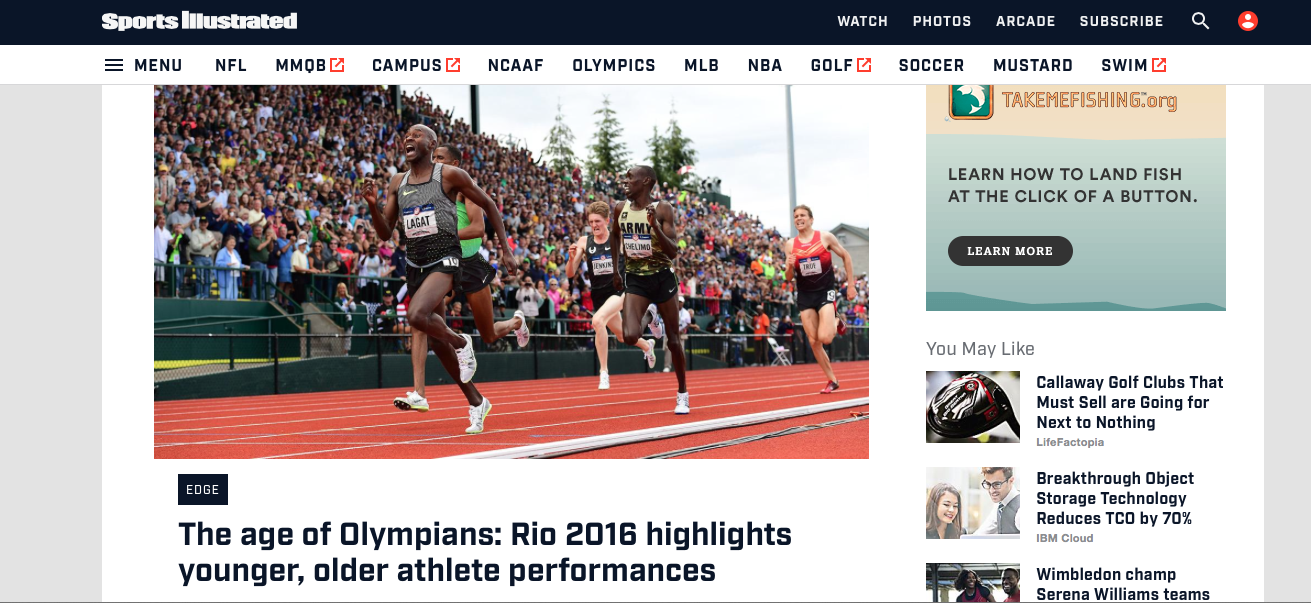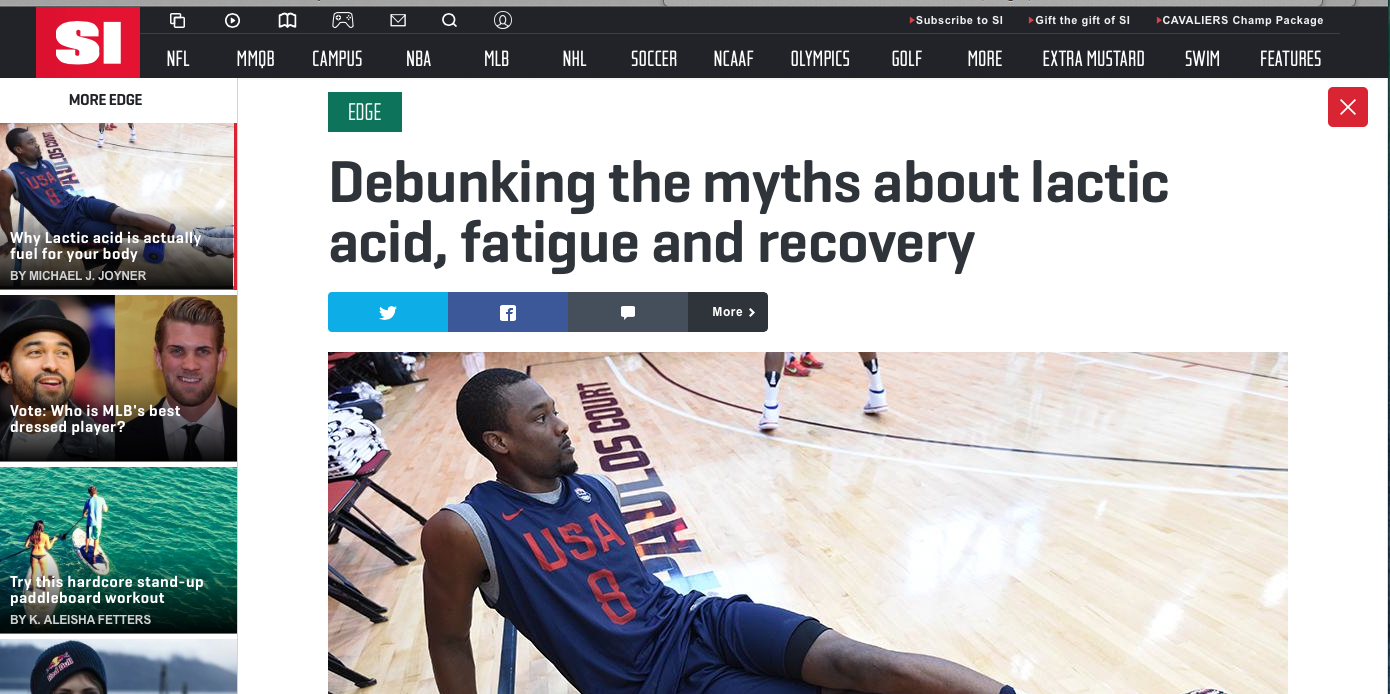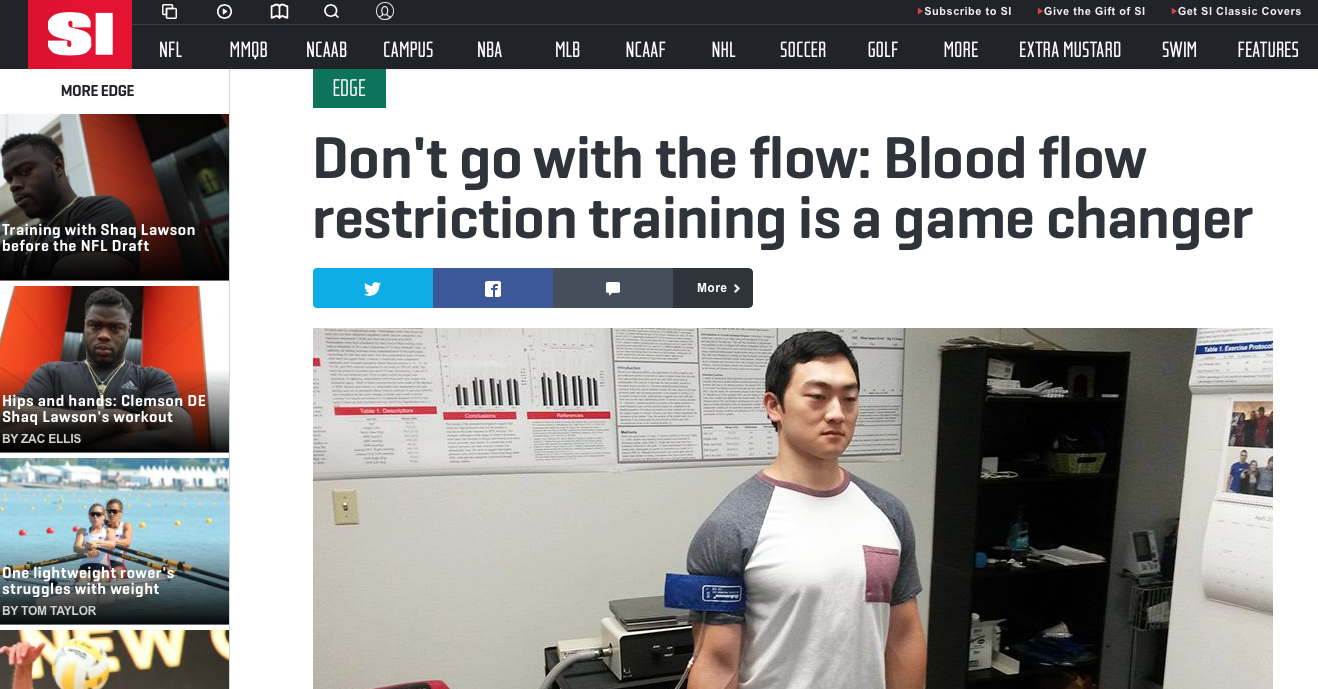Archive for the ‘Elite Sports Performance’ Category
Bring Back The 3 Hour Marathon!
The big marathon news the last few months has been the Nike Breaking2 effort that culminated in Eluid Kipchoge running a 2:00:25 marathon exhibition last May. As a result of my long time interest in the 2 hour marathon, I got a lot of media questions about this effort and what is next. One of the more interesting subtexts of these questions was the chats I had with some of the writers and reporters I visited with.
A lot of these folks told me they were runners who had done marathons in middle three to four hour range. As the conversations progressed most of them wanted to go faster and were interested in tips about how that might happen. What follows are some key points I made and questions I asked in these conversations. In future posts I am going zero in and take a deep dive on some practical advice to help people go faster, but first an overview.
1. Times used to be a lot faster. My friend and 1968 Boston Champ Amby Burfoot just did a piece on this for the Washington Post based on a “new” study showing times were slowing. In an e-mail exchange on this topic I made the following points
“This is certainly no surprise to people how have followed mass participation running races in the US over the last 2-3 decades and it is clearly reflected in things like the yearly marathon data summary and slower Boston Qualifying times.”
I went on to outline three main reasons for the slower times:
“First, during the original running boom in the later 70s through the middle 80s essentially athletic men and women “read Runner’s World” and emulated the elites in terms of training and racing patterns and all sorts of people with at least some ability were doing relatively high mileage, high intensity training with specific time goals. Second, as things progressed finishing a marathon became as the late Chris Chataway put it a “suburban Everest”, and there was a profusion of marathon training classes that focused on a kinder gentler approach with lower mileage and less intense training – the goal was to finish, not get close to a personal physiological limit. Third, as a result of the kinder gentler approach a much broader range of body types is now doing races and that coupled with increased population body weight is likely contributing to the slower times.
I finished concluded with the following:
“Over the years I have given a number of people who wanted to go faster pretty simple advice, run more, lose weight and do intervals – when followed it works.”
2. Run more races and train for the 10k. In the good old days of the late 70s and early 80s when all sorts of men were breaking 3 hours and many women were running 3:20 or 3:30 people ran the almost weekly 10k, 5 miler, 10 miler, and/or half marathon in their city. There were lots of big and semi-big races and everyone was focused on getting personal records (PRs). Many cities had local grand prix type points systems and yearly club rankings. This sort of racing did lots of things for people but it taught them to push themselves and it ensured that they were getting regular high intensity runs in. People also learned about pacing and had the chance to rub shoulders and talk training with the local “fast people”. The elites of that era were basically 10k runners who were doing a long (15 plus mile) run per week (usually Sundays) to be ready for the marathon. Embedded in this “good old days” narrative are two of my key points “run more and do intervals”. There were also strong local running groups and subcultures. Many places there were “meet on Sunday morning” spots for a long run. One of the most famous was a visitor’s center at Mission Bay in San Diego, and apparently some version still exists! For faster runners these informal “training” sessions sometimes got pretty fast and downright brutal with the last few miles run close to 5 minute pace.
3. Lose Weight. A quick visual inspection shows that all sorts of body types are now doing marathons and endurance sports. For at least some people this is due in part to more strength training. If you are a serious athlete and want to take 10-20 minutes off your marathon time perhaps cut back on heavy weight lifting and switch to push-ups and pull ups. You will be amazed at what dropping 5-15 pounds will do. BMI is a not the world’s best index of body fat, but in the good old days you did not see many people with BMIs over 25 running fast.
Case Report Ed Caesar? Ed is the author of 2-Hours and a recovering big guy rugby player (he is 6’5”). Ed started running more as covered the Breaking2 effort. He lost weight, did intervals and he broke 1:30 for the half marathon. A fine time that bodes well for what I hope is a Breaking 3 effort on his part. He is also a throwback to the 1970s and 80s running boom when as I pointed out at the start of this post when a lot of athletic men and women read Runner’s World and emulated the elites in terms of training and racing patterns and all sorts of people with at least some ability were doing relatively high mileage, high intensity training with specific time goals.
You are currently browsing the archives for the Elite Sports Performance category.








